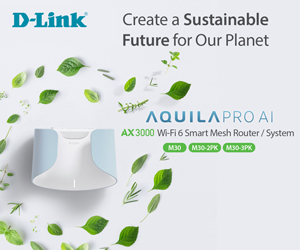The problem with banning social media for children under 16 is not that it is 100% the right thing to do, but in the word, ‘banning’.
As parents, we have the right, responsibility, and power to guide our children’s social media use. It is not about banning but setting boundaries to protect them from potential harm. We must take the time to ‘parent’ – communicate the dangers, and provide more parental interaction instead of more harmful screen time (two excellent articles).
To be crystal clear, Joe and Jane Average can stop their kids from accessing social media right now. But they are too afraid of being pilloried by their kids for trying to save them from its evils.
No, let the Government do what the parents should, so it becomes the scapegoat. Let’s see how that works – vapes are an excellent example of a significant Government policy failure. Banning social media will make it more attractive and drive its use under the radar.
Banning social media starts with WHY
Here are a few dot points to discuss with your children.
- It yields too much uncontrolled, biased content. How can children be expected to know right from wrong if they continually see content opposed to decent family values? There is no PG, M, or R rating system like on TV.
- It encourages experimentation and risky behaviour – a.k.a. fad diets and train surfing
- The algorithms amplify misinformation and polarisation by feeding users data based on their emotional engagement. This leads to a ‘digital prison’ where outsider views don’t exist.
- It affects emotional development by exposing children to adult concepts that desensitise them to their right to develop at their own pace. Things like misogyny, sexual behaviour and opposite-sex respect.
- It leads to sheep-like behaviour following so-called influencers who are paid, well, to influence. There are hundreds of influencers on China’s Communist Party payroll that spread toxic hate and poisonous ideas to destabilise children’s views.
- Big companies invest megabucks to develop social media profiles aimed explicitly at children. “If we get the children, we have them for life”. One such company, Sephora, had a ‘Sephora Tweens’ program that worked exceptionally well and cost parents plenty.
- Social media becomes a drug (dopamine), an addiction and the more children protest, the more that statement is true.
- Social media steals your personal data, which can be sold or used to scam you.
- Once something is on social media, it is there for life and can affect job and social prospects.
- Social media is the prime avenue for cyberbullying.
- Social media is full of people trying to groom you for sexual liaisons.
The banning part is very easy
Home
Most home routers can block IP addresses for specific devices (phones, computers, tablets, smart TVs). Facebook is devious – it has nearly half a million IP addresses globally. However, you can generally block Facebook.com, Instagram.com, and Whatsapp.com. The same goes for TikTok.com, X.com, YouTube, etc. You may also have to block the .AU versions.
Look for parental controls. Some companies, like D-Link, offer pretty good basic blocking for free, and Netgear (Armor) and TP-Link (HomeShield) have optional advanced parental control packages for their routers. These often include out-of-home protection as well.
You can buy programs and apps like Tech Lockdown that will do this. This is the best way to prevent every nominated device from accessing it via the app or a browser.
Android
Recently, Android has digital well-being and parental controls. Freedom and AppBlock are popular paid apps.
iOS
Apple has Screen time controls. Freedom and AppBlock are popular blockers.
Windows and Mac
Cold Turkey has a one-off $55 purchase and many blocking features.
Buy a non-smartphone
CyberShack owner Charlie Brown was so concerned about the impact of social media on his kids that he and his wife invested a fortune in developing and manufacturing children-friendly devices called G-Mee. These feature App Locker, which can manage access to Android apps (parental controls). They have no cameras (no nude photos!) and CoPilot, remote parental management. It offers smart players to smartphones (G-Mee Connect Pro, $189).
CyberShack’s view – Banning social media for children under 16. Do it now, and don’t wait for the Government.
Kids can complain that no social media access means FOMO (Fear of Missing Out), but that is just another sign of addiction. Well, let them complain and instead learn how to communicate with parents, read books, listen to music, do homework, play outside, make real live friends, and stop blaming bad behaviour on poor mental health caused by social media.
Waiting for the Government to act is the coward’s way out. The reality is that until we all have a Digital ID that proves who we are (and what age we are), we must look to ourselves to protect our kids. If this happens, you will feel justified in helping to regain control of your kids’ lives.
Are we overreacting? Is our advice a vendetta against social media? Too many respected studies and experts have concluded that social media harms children before they develop a ‘sense of id’ (the primary component of personality that guides who we are and how we behave).
Unfortunately, there are no half-measures when it comes to social media. You either have it and are addicted to it or not.
If we took control, perhaps the worst offenders, like Facebook, TikTok, X, and YouTube, would develop safe digital playgrounds free from the crap that kids see today.
Personally, I think 16 is still too young.









Comments